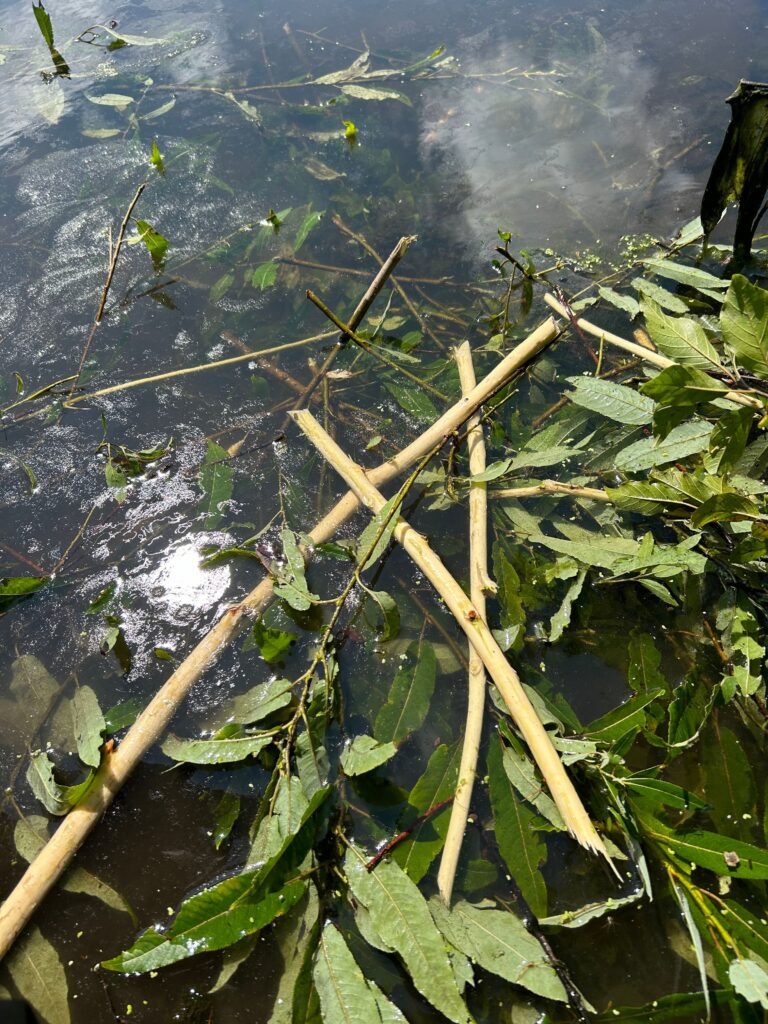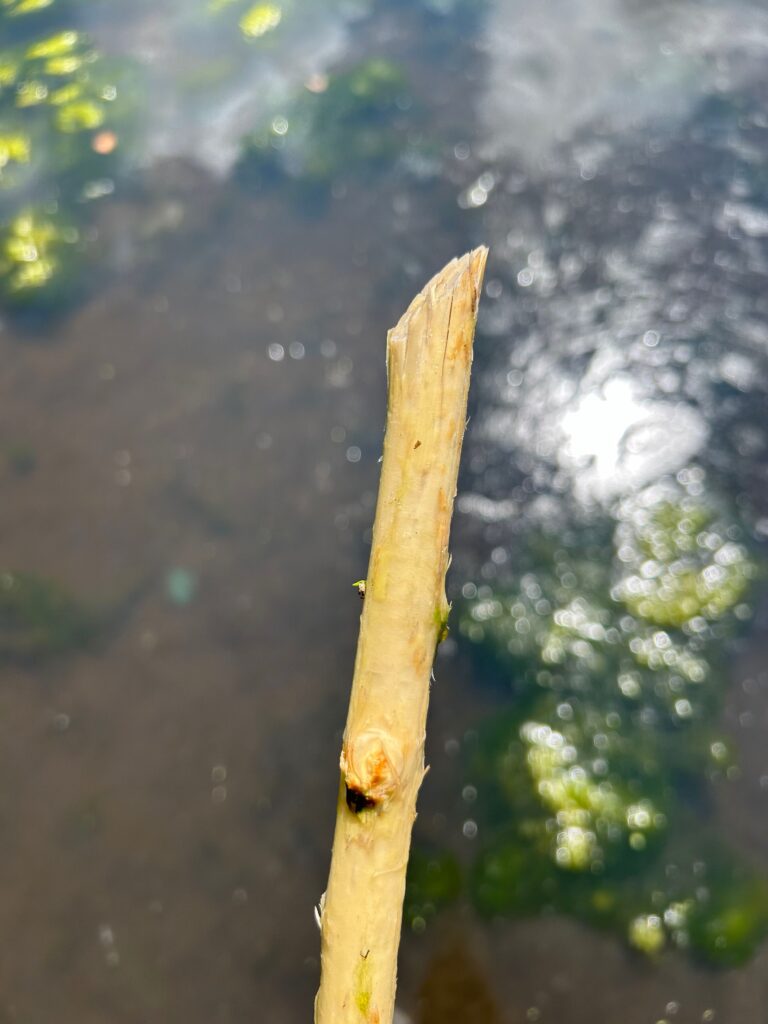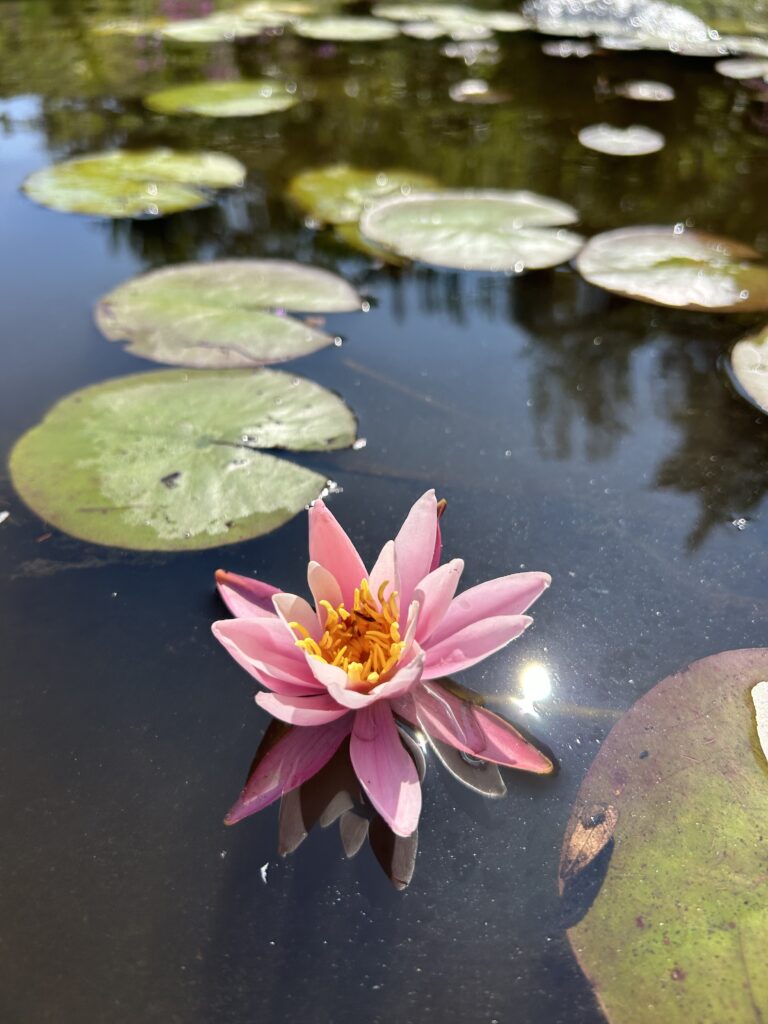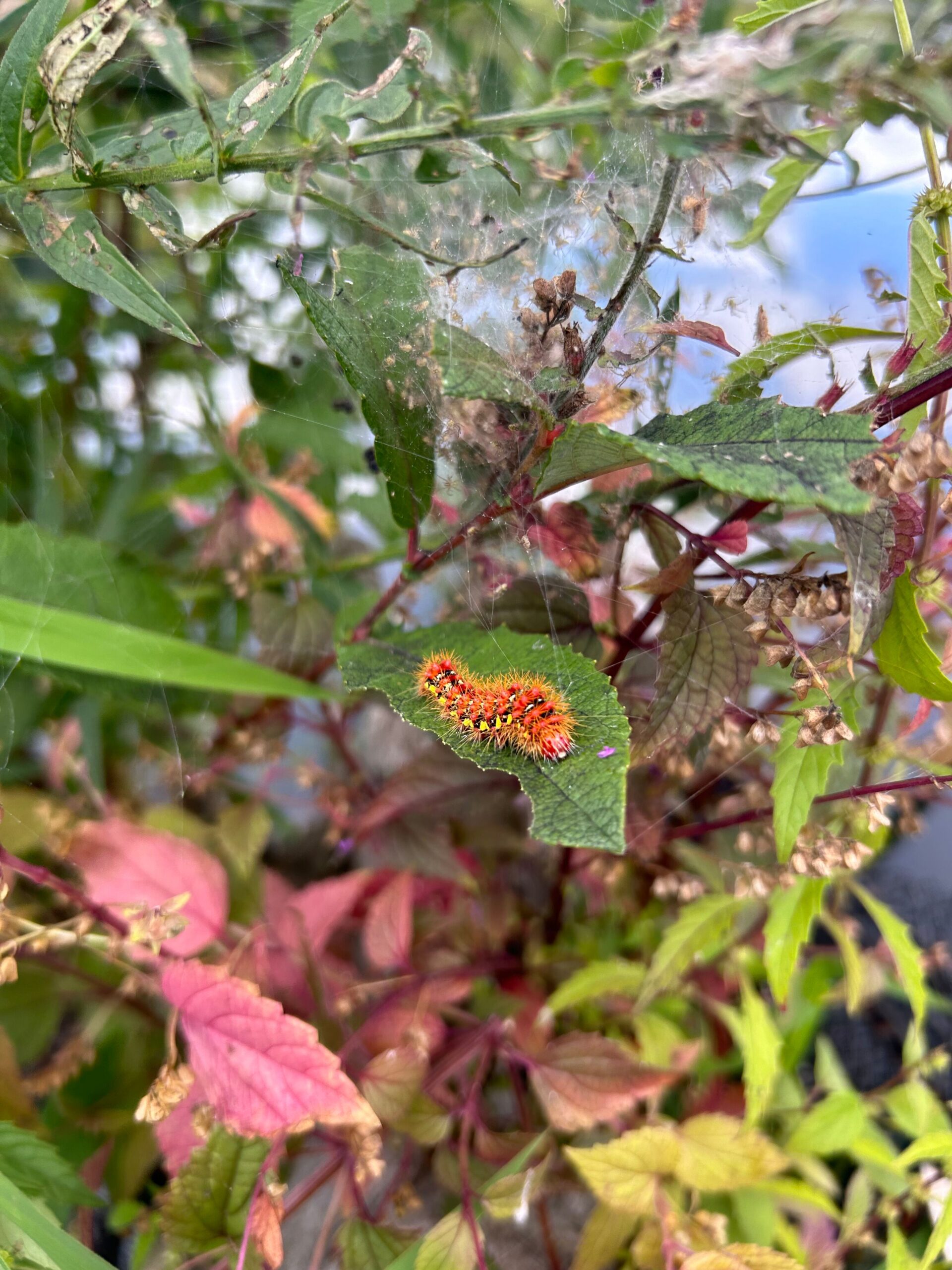Many from the northern side of Greater Boston know of the beauty to be easily admired from any path you take at this urban wetland, but after these past few weeks, my team and I have had the opportunity to admire this wetland from a different perspective than most, from within the water. Zoo New England Conservation was warmly welcomed to conduct one of our famous turtle surveys, trekking through the wetlands setting traps to investigate what species of turtles are friends of Horn Pond.
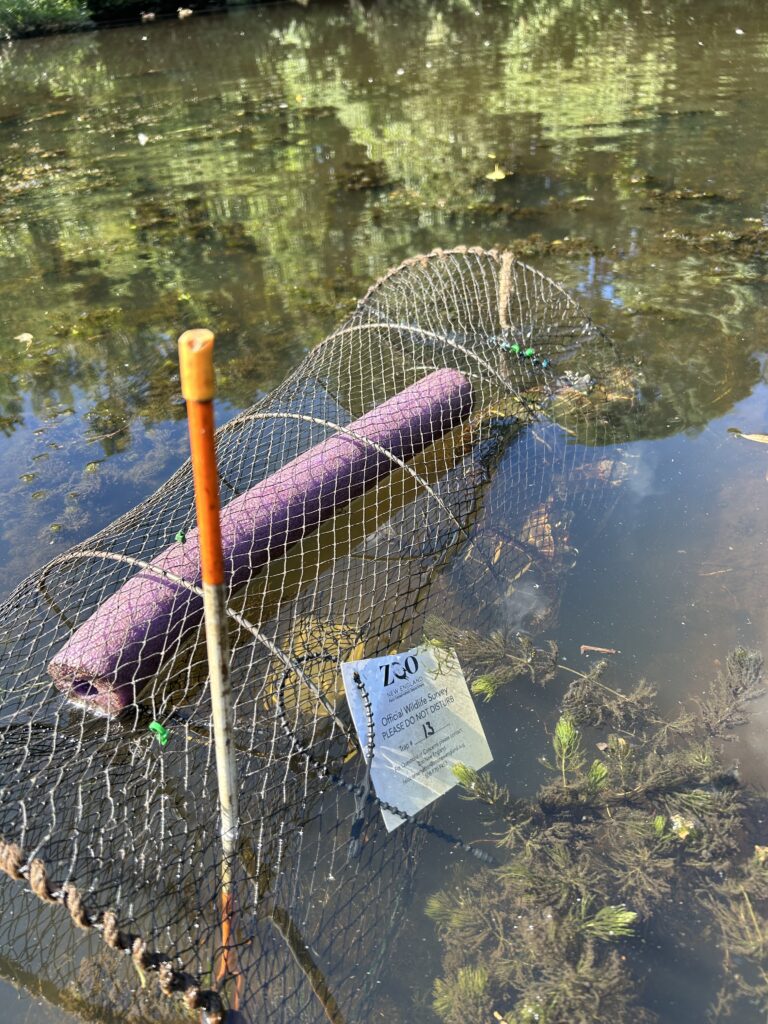
Our turtle survey consisted of setting 16 traps baited with sardines, kept afloat with a pool noodle, and secured in place with a stake. These traps are then left out in the water overnight and checked by our team the next morning, taking data on what is captured in each trap, then releasing everyone caught. The data we take depends on the species we catch, if it’s a species of interest, we will take more intensive data such as weights, measurements, and habitat assessments. If the species is rather common and of little to no conservation concern, we simply record their species, sex, and quantity found. The traps were set in various pools along the Horn Pond area for three weeks, and our findings will be presented to the Conservation Committee at an upcoming meeting.
So what did we find? The most common turtle we came across is a beloved native turtle species, the Painted turtle. Painted turtles get their name from their beautiful coloration appearing as though they’ve been hand painted by an incredible artist. This species is native to Massachusetts and isn’t picky when it comes to their habitat. You’ll find these turtles in a variety of wetlands and they’re often seen basking out on logs, as their shiny sleek shells make them an especially eye catching turtle.
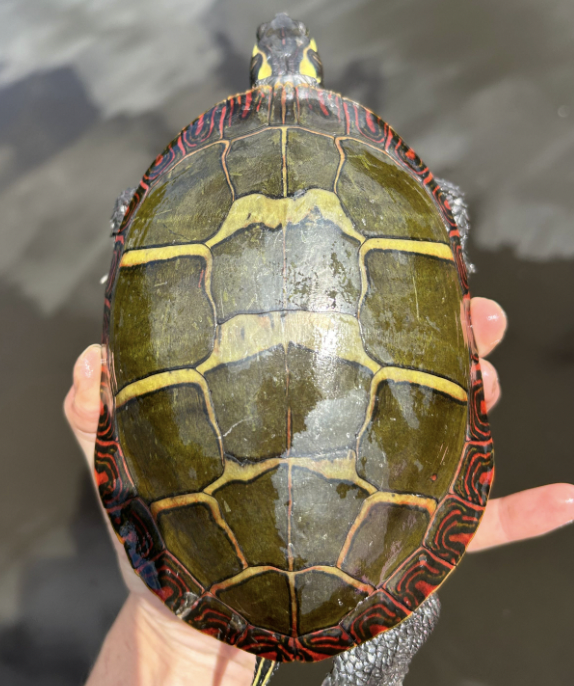
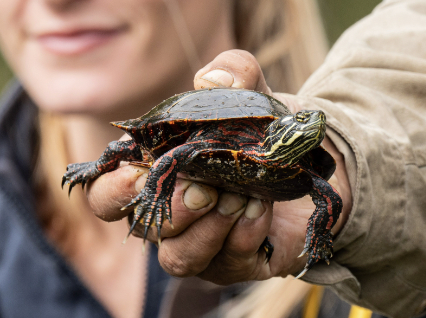
yellow striping continuing through the turtles eyes.
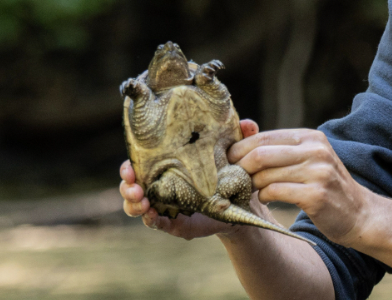
The second most common turtle species we found living at Horn Pond, is one we found to be brought up quite often in passing by discussions with folks enjoying their walk around Horn Pond, the Snapping turtle! Snapping turtles are another species native to Massachusetts and are the largest found in the state getting up to 19 inches in length and 30 pounds in weight. While these jurassic looking turtles may first be perceived as a “mean” or “dangerous” animal, they’re quite the opposite once better understood. Unlike other turtles, the Snapping turtle is unable to protect all of their limbs by tucking them in their shell due to having a reduced plastron or bottom shell. This leaves the Snapping turtle’s limbs exposed making them vulnerable to predation, hence where the adaptation to snap comes in.
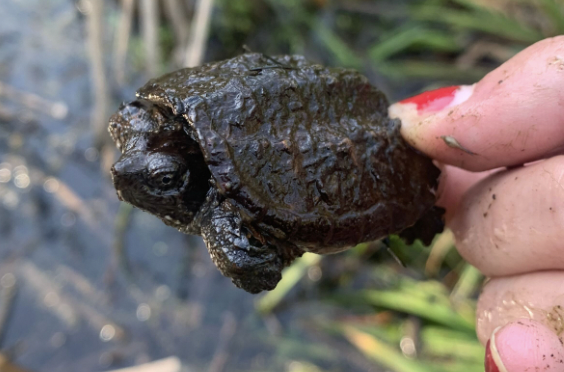
This characteristic snapping also makes the species an exceptional predator, which in the case of Horn Pond, has given the Snapping turtles a bad reputation. Especially skilled individuals may be able to conquer prey such as young waterfowl, including Mute Swan cygnets. While Mute Swans look beautiful and majestic, enough so to be a symbol of love, the species is not so innocent themselves. Mute Swans have been observed drowning the young of both other species as well as their own, if they make the mistake of entering a mated pair’s territory. This invasive species is incredibly territorial, known to attack just about anyone invading what they deem to be their space, including humans. Additionally, they will trample the nest, eggs, and chicks of other waterfowl species, often displacing native ducks and geese. While Snapping turtles may not visually qualify as a symbol for love, they do have to eat, and what better source of protein than a bully pest?
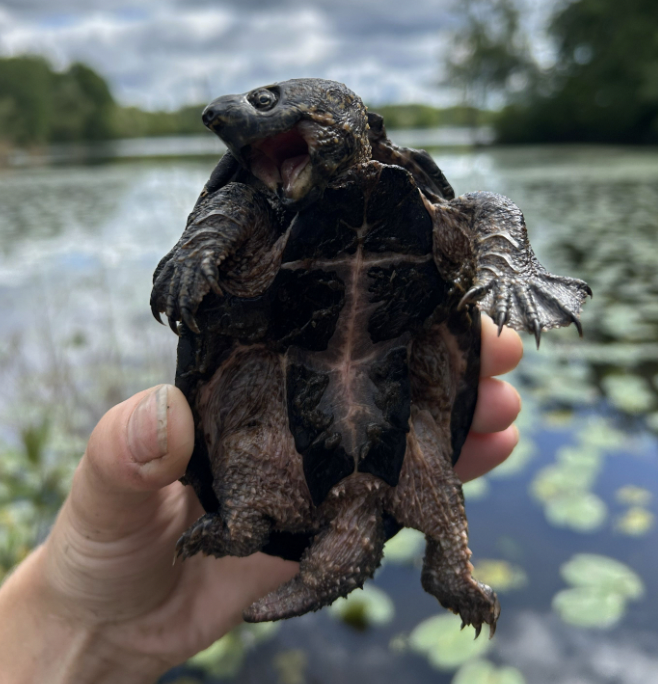
The most unique species of turtle we came across during our survey, was an individual Musk turtle. We only caught this single Musk turtle during our three weeks of trapping. This native species is not easily come across as they’re a rather small and discrete turtle, so we are always pleasantly surprised to find one of these beautiful friends. This species is another one with a reduced plastron, like the Snapping turtle, which is actually where the name “Musk” turtle comes from. Rather than a snapping adaptation to defend themselves, they are able to release a musk when spooked!
Another turtle species our team came across during our survey is the non-native Red-eared slider, that we are too often finding in urban wetlands, likely as no longer wanted pet releases. What was notable here at Horn Pond was the range in ages we found for this species, both adults and young juveniles, which suggest an established population. Discarding captive kept animals into the wild poses numerous threats to both the existing populations that inhabit that location, as well as for the no longer wanted animal. You should always do your research on any animal you are looking to add to your family, and never release any pet into the wild. Responsible pet ownership can help protect the health and welfare of wildlife, like the wild turtles who call Horn Pond their home. While the established population of Red-eared sliders does pose threats, it is currently still a rather small population and therefore is not known to be directly harming the native populations.
Turtles were of course our primary focus while exploring the wetlands of Horn Pond, but we also came across some other interesting beauties during our exploration, as beauty comes in all shapes, sizes, and species!
